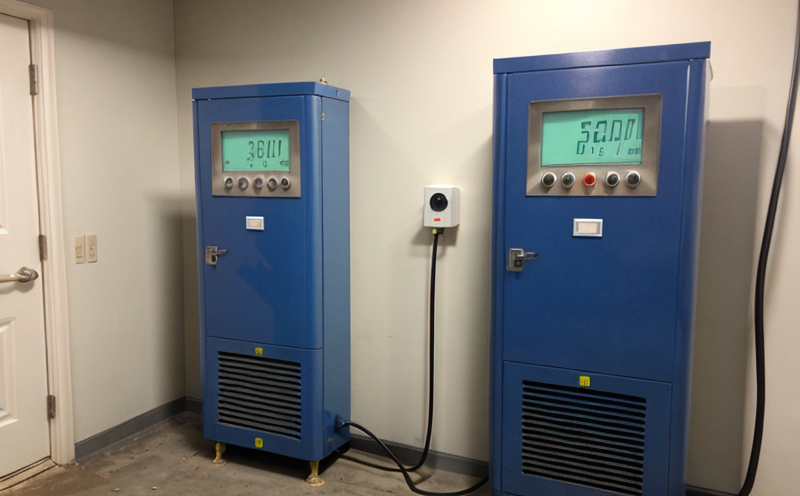OSHA ID 210 Sulfur Dioxide Monitoring in Mines Testing
The OSHA standard ID 210 is a critical requirement for monitoring sulfur dioxide (SO₂) in mining environments. This regulation ensures that mines maintain safe levels of SO₂ to protect the health and safety of workers. The primary goal is to prevent respiratory issues, irritation of the eyes, nose, and throat, and other adverse effects associated with prolonged exposure to high concentrations of this gas.
The testing for compliance under OSHA ID 210 involves a series of meticulous procedures that ensure accurate measurement and reporting. These tests are conducted using specialized equipment designed to detect SO₂ in real-time or over specific time intervals, depending on the mine’s operational requirements. The sampling and analysis methods must be precise to meet the stringent standards set forth by OSHA.
The first step in this process is the collection of air samples from various locations within the mine. These samples are then analyzed using gas chromatography or other similar techniques approved by OSHA for detecting SO₂ concentrations. The results of these analyses are critical as they determine whether the mine complies with the permissible exposure limit (PEL) set forth in 29 CFR 1960, Appendix A.
The PEL for sulfur dioxide is 5 parts per million (ppm). This means that any concentration exceeding this level requires immediate action to reduce it. Failure to comply can lead to fines and other penalties imposed by OSHA. Therefore, ensuring accurate testing results is paramount in maintaining compliance with the law.
Compliance with ID 210 also involves regular calibration of monitoring equipment and periodic review of sampling protocols. This ensures that all measurements remain accurate over time, which is essential for effective long-term management of SO₂ levels within mines.
To summarize, OSHA ID 210 Sulfur Dioxide Monitoring in Mines Testing is a vital component of any mining operation's safety program. By adhering to this standard and performing regular tests, mine operators can safeguard their workers' health while also avoiding potential legal issues related to non-compliance.
Applied Standards
The testing for OSHA ID 210 compliance primarily follows the guidelines established in OSHA Standard 29 CFR Part 1960, Appendix A. This standard sets forth specific requirements regarding the sampling and analytical methods used to measure sulfur dioxide levels. It emphasizes the importance of using appropriate equipment such as gas chromatographs or other instruments approved by OSHA.
In addition to these federal regulations, many mining companies also adhere to international standards like those provided by ISO, ASTM, and others. These additional standards provide supplementary guidance on best practices for conducting accurate tests and maintaining proper calibration of monitoring equipment.
The chosen methods must ensure reliable detection of SO₂ concentrations across different environments within the mine, including areas where ventilation may be inadequate or where there is a higher risk of exposure due to natural geological conditions.
Benefits
- Enhanced Worker Safety: By accurately monitoring SO₂ levels, mines can ensure that their workers are not exposed to hazardous concentrations. This helps in maintaining a safer working environment and reducing the risk of health issues.
- Avoidance of Legal Penalties: Compliance with OSHA ID 210 reduces the likelihood of violating federal regulations, thereby avoiding potential fines and other penalties imposed by regulatory bodies.
- Economic Efficiency: Proactive management of SO₂ levels can help minimize downtime caused by unexpected shutdowns due to non-compliance. Additionally, it allows for better resource allocation towards maintaining safe working conditions.
- Informed Decision Making: Regular monitoring provides valuable data that can be used to make informed decisions about ventilation systems and overall mine operations. This information is crucial for optimizing productivity while ensuring safety standards are met.
The above benefits highlight why accurate and consistent OSHA ID 210 sulfur dioxide monitoring is essential for any mining operation. It not only contributes to the well-being of employees but also helps in maintaining a successful business by avoiding unnecessary disruptions and costs associated with non-compliance.
Quality and Reliability Assurance
- Calibration: Ensuring that all monitoring equipment is regularly calibrated to manufacturer specifications is crucial. This process involves checking the accuracy of instruments through comparison with known standards before each use.
- Data Validation: Once collected, data from SO₂ tests must undergo rigorous validation checks to ensure its reliability and consistency across multiple readings taken under varying conditions within the mine.
A commitment to quality assurance extends beyond just these two aspects. It includes continuous training for personnel involved in conducting tests, maintaining up-to-date knowledge about advancements in technology and methodologies used in environmental monitoring, and implementing robust quality control measures at every stage of the testing process.
By adhering strictly to these practices, laboratories can provide clients with confidence that their compliance efforts are both thorough and reliable. This commitment to excellence ensures that mines remain compliant with OSHA ID 210 requirements while simultaneously enhancing worker safety and operational efficiency.





